A seine survey is a relatively easy way to learn about fish populations in impoundments and streams and to help improve management decisions. Seining is one of several fish survey techniques, which also include hook and line fishing, electrofishing, scuba diving/snorkeling, cast netting, gillnetting, hoop netting, fyke trap netting or fish trapping.
Seine design and the method used in surveys should remain consistent across years and ponds so changes in animal species and abundances captured represent population changes rather than changes in survey technique.
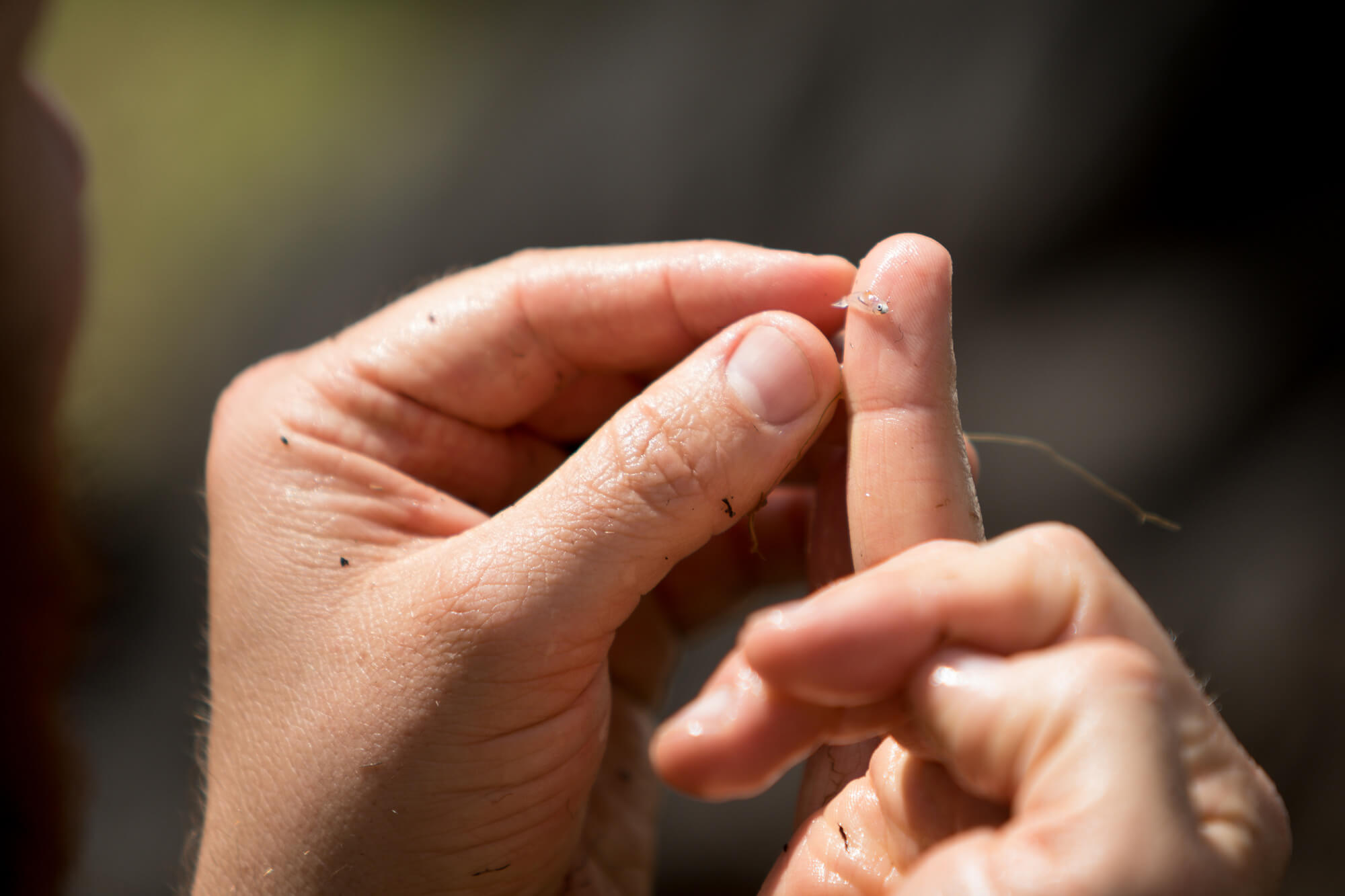
For More Information
Information about hook and line fish surveys and fish trap surveys are available
Seine Design
Seines are available in different lengths, heights and mesh sizes, and they can have different-sized floats and weights. Also, a seine can have extra material in the middle that forms a bag, which improves capture and retention of aquatic organisms.
In my opinion, a 20-foot-long seine that is 4 to 6 feet tall is a good size for surveying small impoundments. I prefer 1/8-inch mesh for pond surveys so the seine can capture many fish fry and insects. However, a seine with 1/4-inch mesh can be used as long as the data interpreter realizes many fish fry and insects pass through the mesh.
A pole somewhat longer than seine height should be attached to each end to provide support and make it easier to move the seine through the water. The pole bottom should be pushed along the pond bottom ahead of a person moving the seine to keep the weighted line from lifting off the bottom.
Survey Method
Common seine survey methods include quadrant survey and drag survey. In a quadrant survey, a person pulls the seine into the water perpendicular to the shore, while another person follows and stops the seine at water’s edge. The person in the water pulls the seine in an arc to shore while keeping it tight; this motion forms a quadrant of a circle. If the shoreline is smooth and has a gradual slope, both people can drag the seine out of the water while keeping the weighted line on the bottom. If the shoreline has much slope or vegetation, one or both people should move the poles together while keeping the weighted line on the bottom. Then one person holds the poles as the other person pulls the weighted line out of the pond while keeping it on the bottom.
In a drag survey, both people pull the seine through the water for a distance and then remove the seine from the water using one of the aforementioned techniques or the lift technique. With the lift technique, the seine is pulled tight while the weighted line is quickly and smoothly lifted out of the water in a single fluid movement by turning and lifting the poles.
Multiple seine samples should be collected from each pond because different habitats and locations commonly have different animal communities. For ponds larger than 1 acre, I recommend collecting at least four samples per pond. However, when most samples from a pond capture different animal species, I recommend collecting additional samples until no new species are captured. Seine locations should be devoid of rocks, stumps, sticks, wire, posts and drop-offs. Seine locations should have minimal aquatic vegetation and should have water depths shallower than seine height at the deep end of the seine.
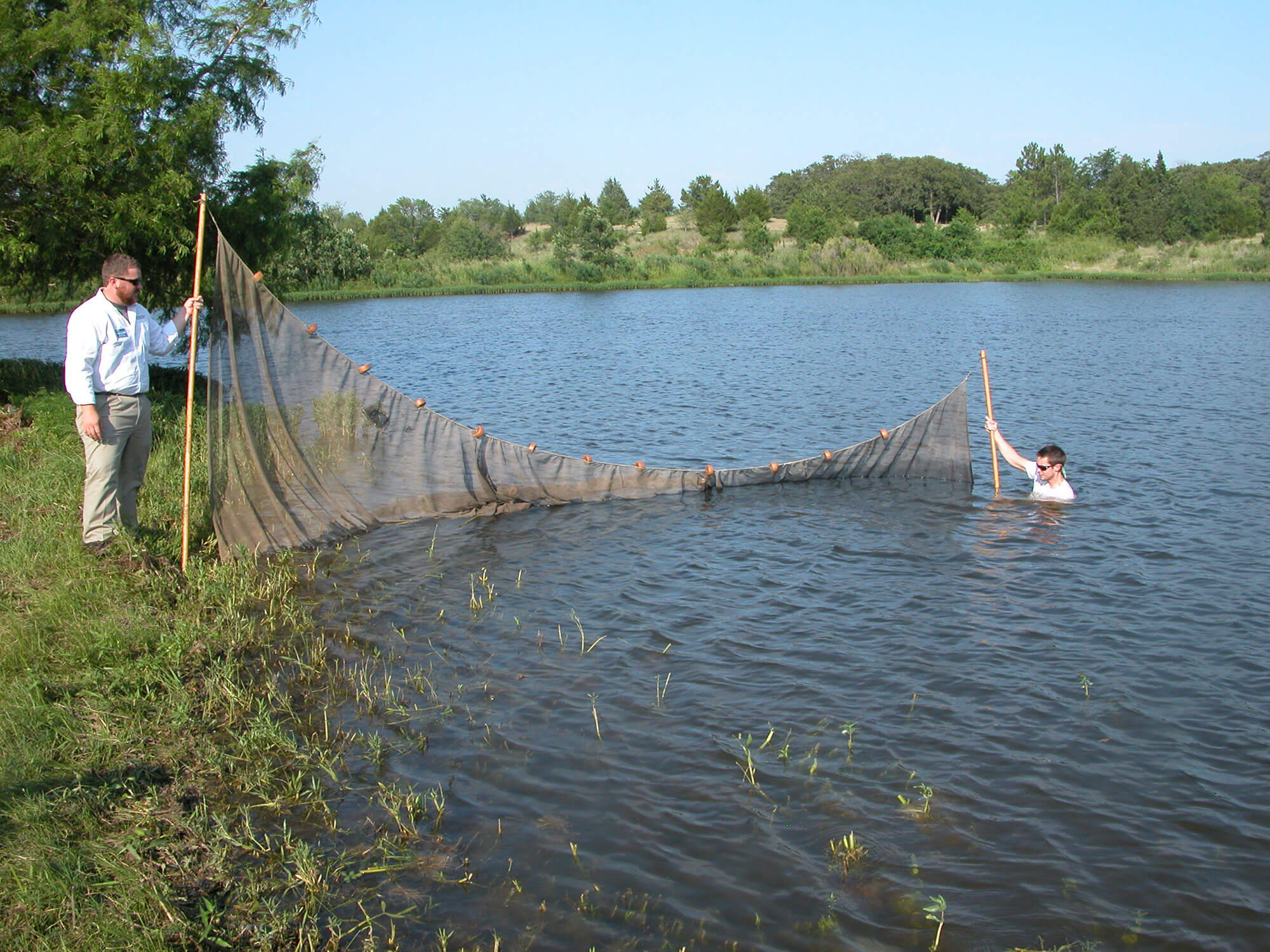
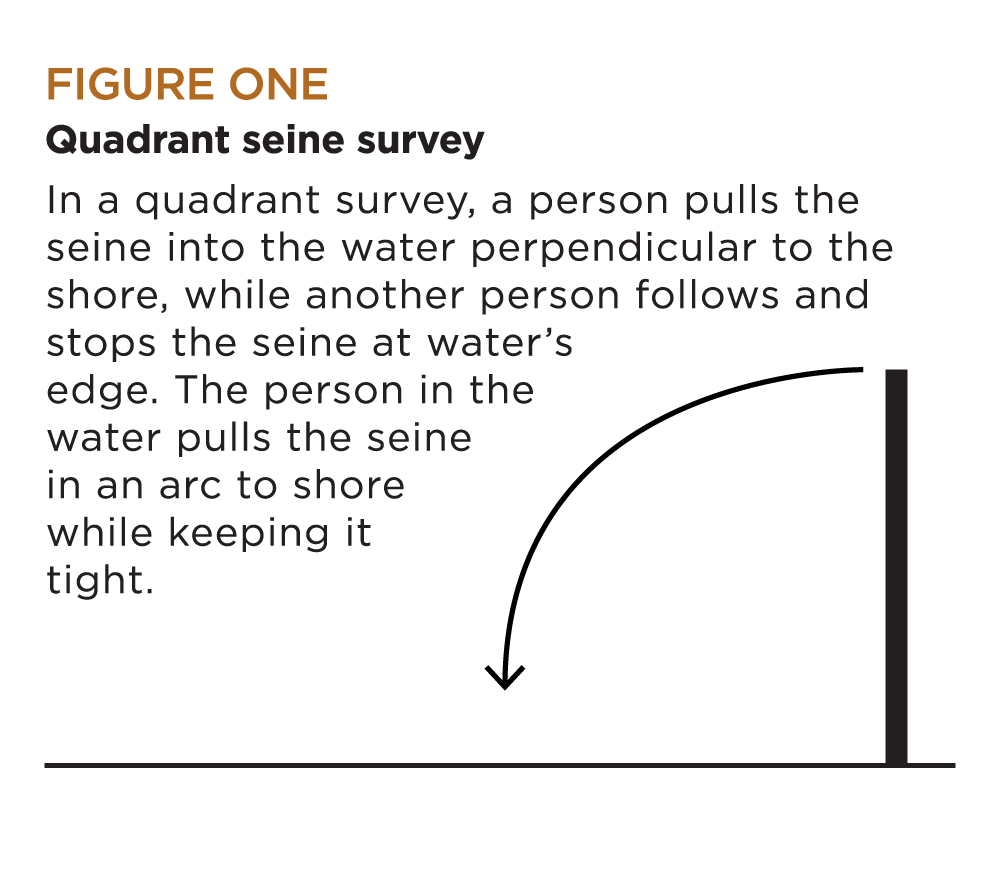
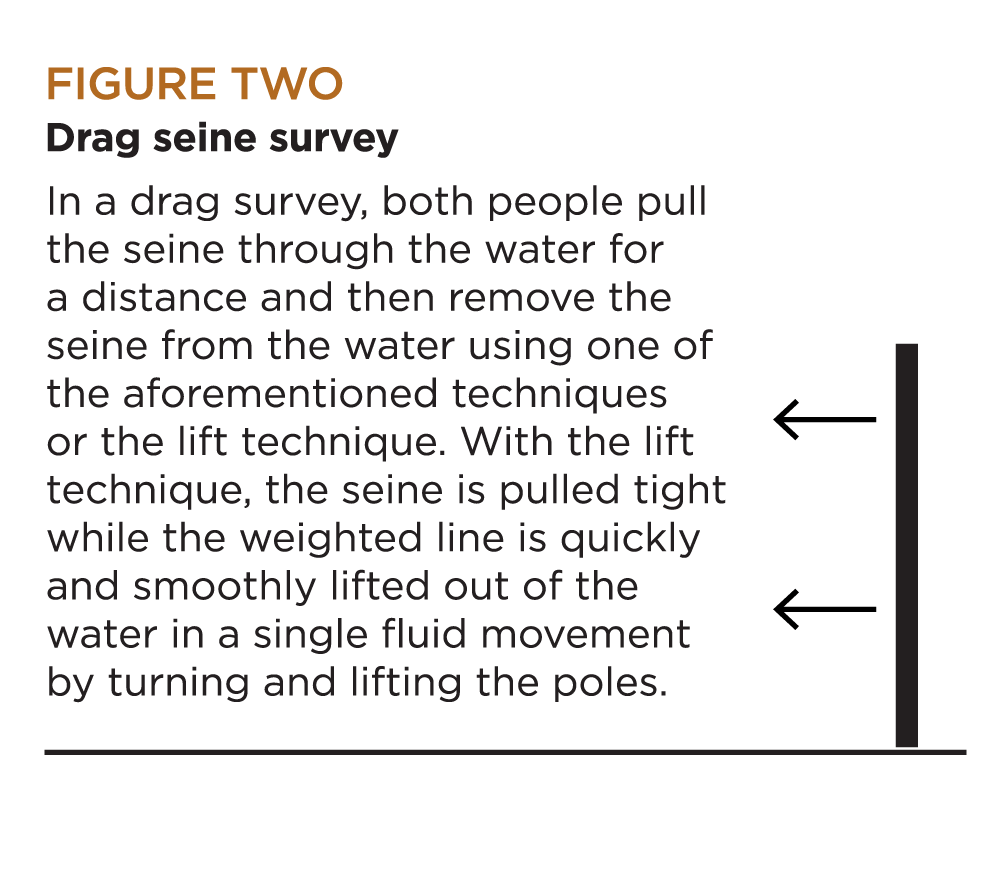
Interpreting Survey Information
Seine surveys provide insights about a pond’s aquatic ecology, but there are biases and limitations, as with all fish survey techniques. Understanding these biases and limitations is important to properly interpret and use survey information.
Any fish, frog, salamander, crayfish, insect, shrimp, leech or snail species captured confirms the presence of the species in the pond. However, one or more fish species not collected with a seine might be present. Twenty-foot-long seines do a poor job of collecting catfish species and most fish longer than 3 inches, so the numbers caught typically are not representative of their populations. Seining is a good technique for monitoring sunfish and minnow reproduction in ponds. Seine surveys conducted during summer should capture bluegill, green sunfish, largemouth bass, and minnow fry or fingerlings every year where such species have healthy populations.
Invertebrate, amphibian and small fish species captured or not seen in seine samples can provide additional insight about a fishery. When dozens of aquatic insects or more than one leech are captured in most seine samples, sunfish and catfish probably are absent or scarce. Dozens of crayfish, tadpoles, salamanders, mosquito fish or small minnows captured in several seine samples indicates few or no largemouth bass are present.
Seine surveys, especially when combined with other techniques such as hook and line surveys, provide helpful information for pond management decisions. Seine surveys are rarely necessary in a pond every year, but periodic surveys helps monitor fish and other aquatic animal community changes over time. Maintaining records of animal species, sizes and numbers captured during seine surveys helps document these changes. Seining can be enjoyable and provide a legitimate excuse to catch fish in the name of scientific pond management.
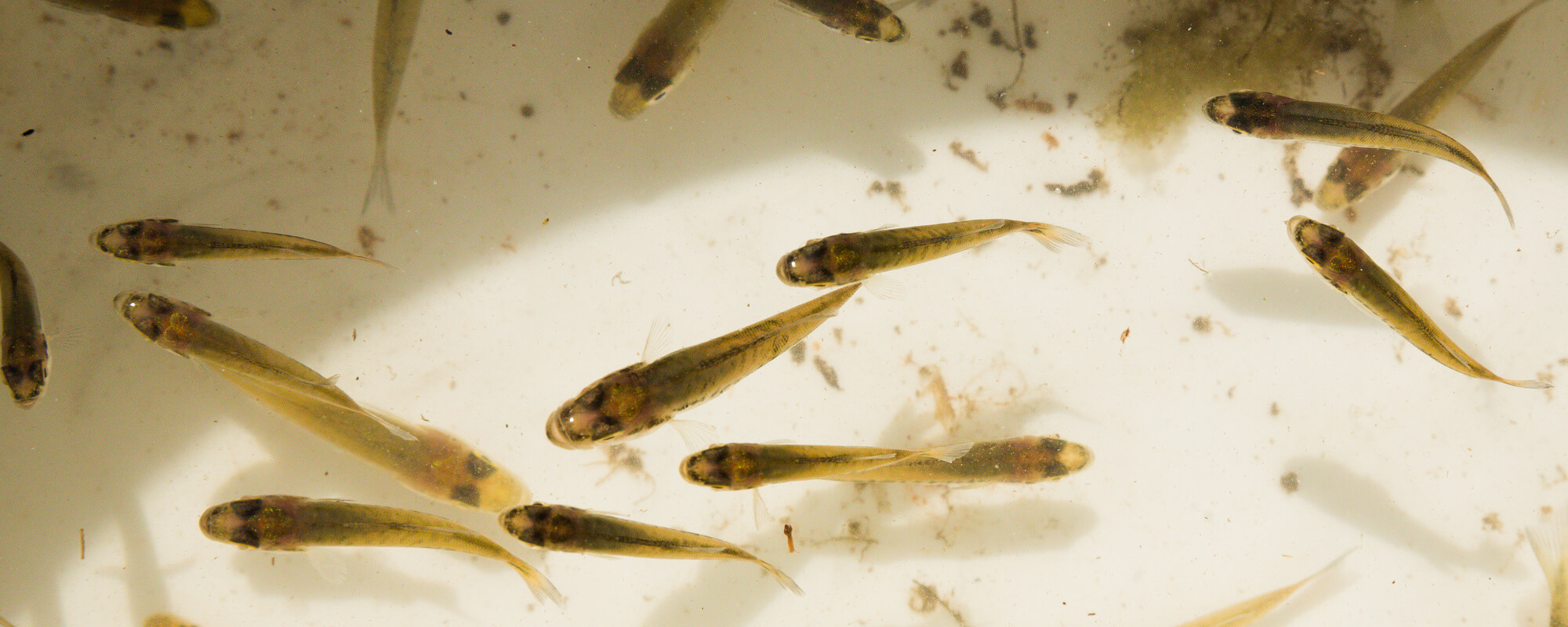

Comments